Taper vs Fade: A Guide by Barber Sunny
Confused about choosing between a taper and a fade? You're not alone.
Today, I'll break down the specifics, clearing up any confusion.
Understanding their differences is key – it's about getting the haircut you want and ensuring your barber understands your style.
Let’s cut right to the chase and guarantee satisfaction every time.
Taper vs Fade: The Main Differences
A taper is a gradual transition, typically around the sideburns, with variations in height. Unlike a fade, it stops at the top of the ear. In contrast, a fade encompasses the entire head, following guidelines around the temple and below. Both styles require precision, ensuring a clean blend and a tailored look to suit individual preferences.
Stay tuned for a detailed exploration of each style, enhancing your barbershop experience and ensuring satisfaction every time.
| Aspect | Taper | Fade |
|---|---|---|
| Definition | A blend into the side bulk of the hair, around the sideburn area. | A gradual decrease of hair length around the entire head. |
| Location | Stops at the top of the ear. | Continues all around the head. |
| Variations | Low (ear to eye), medium (ear to eyebrow), high (ear to temple peak). | Based on height of the fade (e.g., high, mid, low) and extends beyond the ear. |
| Technique | Create a guideline with a zero guard, blend upwards in sections, adjust lever for smooth transition. | Start with a zero guard, remove bulk underneath, blend around the head with increasing guard sizes. |
| Beard Integration | Blend down into the beard, keeping above the ear based on client preference. | Not applicable as it focuses more on the hair around the head. |
| Final Look | Subtle or drastic blend, maintaining more hair on the sides. | Sharper, more pronounced contrast with less hair on the sides and back. |
What is a Taper?
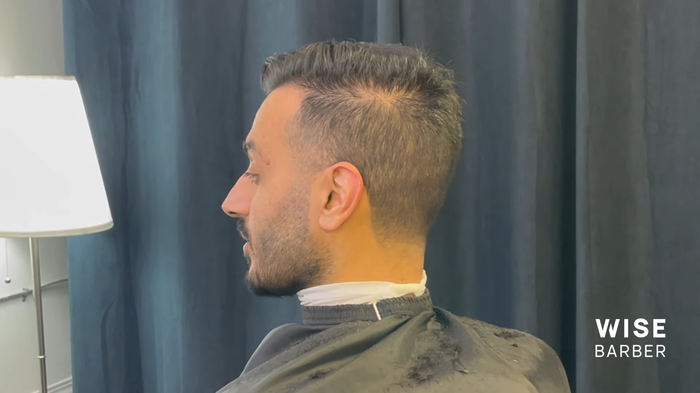
A taper is essentially a transition in your hair that can range from subtle to drastic. This transition is designed to blend into the bulk of the hair on the sides. It's a technique that adds dimension and style to your haircut, making it a versatile choice for various hair types and lengths.
The taper is primarily focused around the sideburn area. Unlike some styles that go all the way around the head, the taper stops at a specific point – typically at the top of the ear. This strategic placement is what gives the taper its unique and distinguished look.
Variations of a Taper
Tapers can be categorized into three main types based on their height:
Low Taper: This style extends from the top of the ear to around the eye level. It's a subtle option that adds a slight edge to your look without being too bold.

Medium Taper: For those looking for a bit more prominence, the medium taper extends from the top of the ear to the eyebrow. It's a noticeable yet balanced choice, suitable for various occasions and styles.
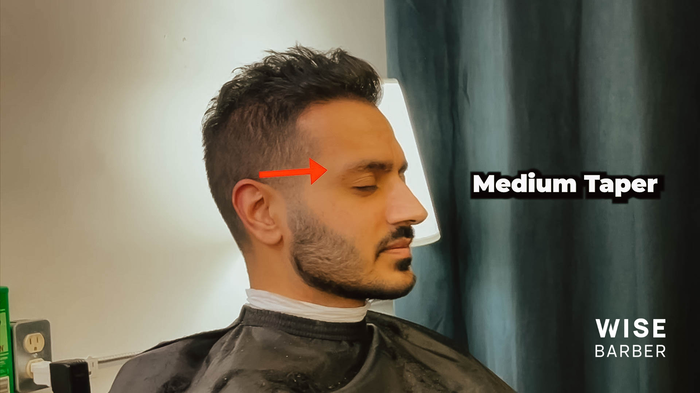
High Taper: The high taper reaches from the top of the ear to the temple peak point. It's the most noticeable of the three and adds a significant level of style and distinction to your haircut.
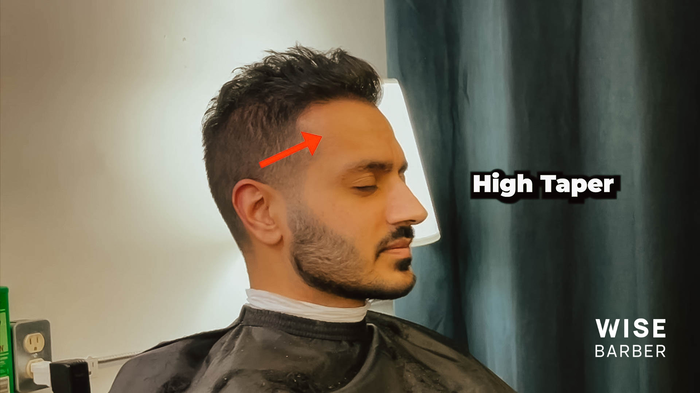
Each type of taper offers a different level of intensity and style, allowing you to customize your look according to your personal preference and facial features.
What is a Fade?
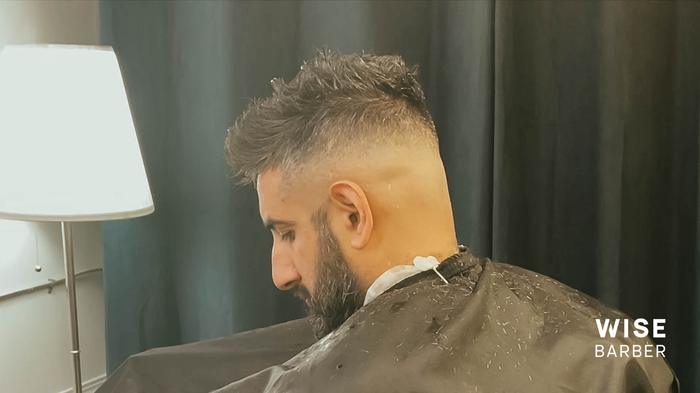
A fade is notably different from a taper as it encompasses the entire head. While it may share some initial guidelines with the taper, such as the use of certain facial points for reference, its execution and final look are distinct. The key difference lies in the fact that instead of stopping at the top of the ear, a fade continues all the way around the head.
Variations of a Fade
The fade can be categorized into several types, each offering a different aesthetic:
Low Fade: This style is generally kept near or below the eye level. It's subtle yet adds a sleek edge to your look.
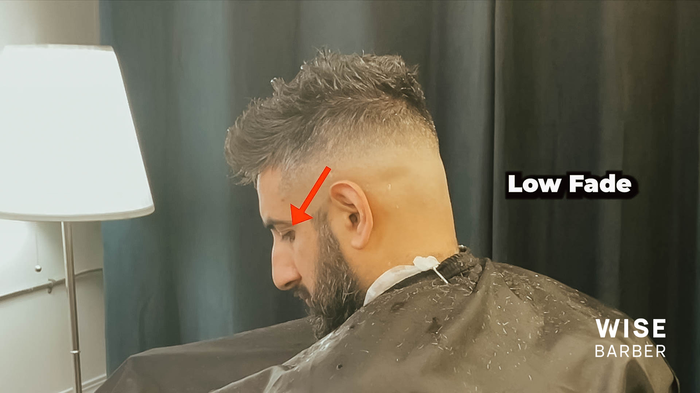
Mid Fade: Positioned near the eyebrows, the mid fade offers a balanced and noticeable transition that's popular in contemporary styles.
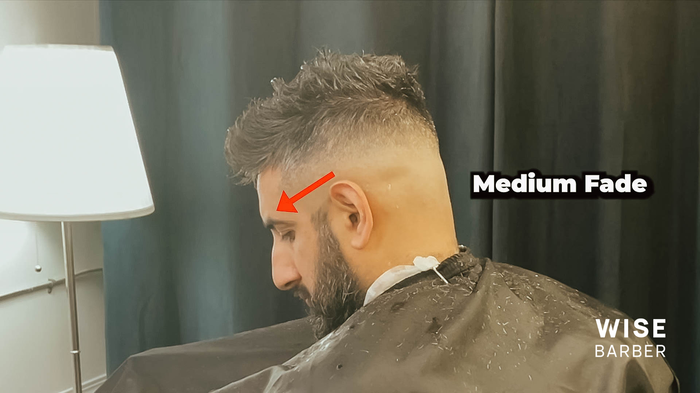
High Fade: Reaching near the temple peak point, the high fade is the most dramatic of the standard fades, creating a bold and striking look.
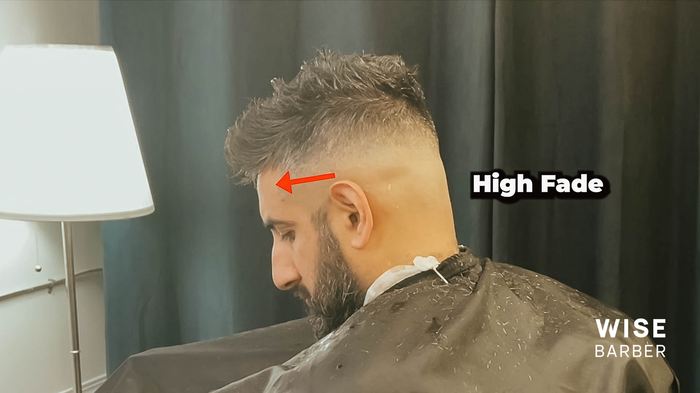
Burst Fade: This unique style involves a small circle or half-circle fade around the ear, fading outwards. It adds a creative twist to the standard fade.
Skin Fade: Involving the use of a shaver or razor, this fade takes the hair down to the skin, offering a very clean and sharp appearance.
Drop Fade: Characterized by a lower drop in the back of the head, this style offers a nuanced variation to the standard fade.
Shadow Fade: Similar to the drop fade, it’s a style that provides a subtle transition, giving a 'shadow' effect.
Each type of fade brings its own character and flair to a haircut, allowing for a range of styles from subtle to bold. For a more in-depth look, check out our article here.
5 Taper Haircuts
1. Classic Taper
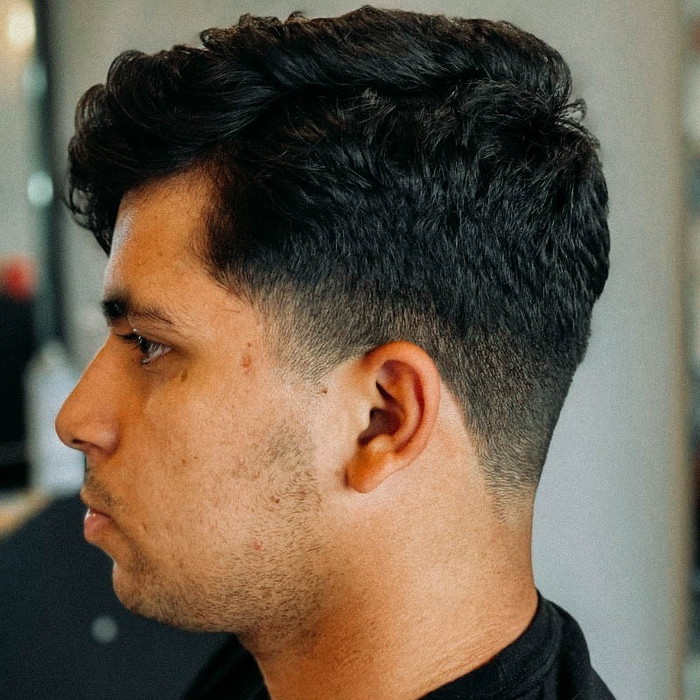
Now:
A classic taper features a full top cut shorter as you move to the back of the head and the sides.


Styling Tips:
- Use styling cream or mousse to add volume to the top.
- Condition the top to keep it silky and smooth.
- Pair your haircut with a stylish quiff to achieve an edgy look.
2. Long Taper
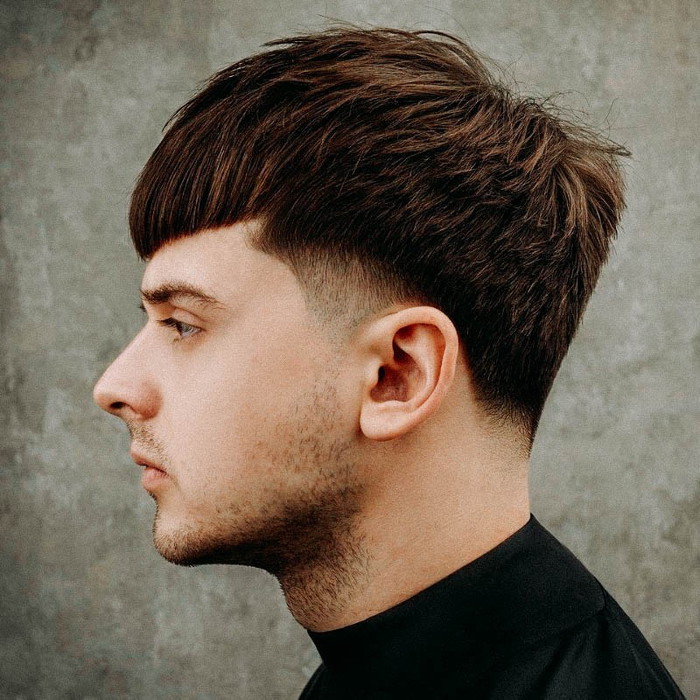
So:
This hairstyle keeps the top long and the sides short, although longer than a regular taper.


Styling Tips:
- You need about three to five inches of hair to pull off this look.
- Style your sideburns with a short fade to accentuate your look.
- Trim your hair regularly to keep a neat appearance.
3. Side Part + Taper
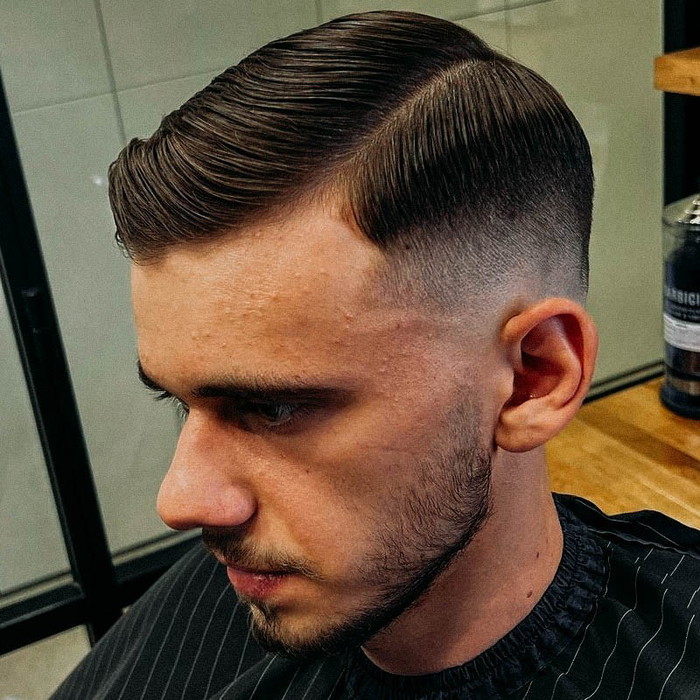
To pull off this look:
First, wash your hair and leave it slightly damp. Then, blow dry the top to your preferred side, tousle it a bit to add volume, and sleek it down with a styling gel or pomade.
Finish by tapering the sides to a shorter length.


Styling Tips:
- Apply conditioner to keep the top moisturized.
- Enhance your appearance with a well-groomed beard.
- Use a fine-toothed comb to achieve a sleeker look.
4. Low Taper
 | 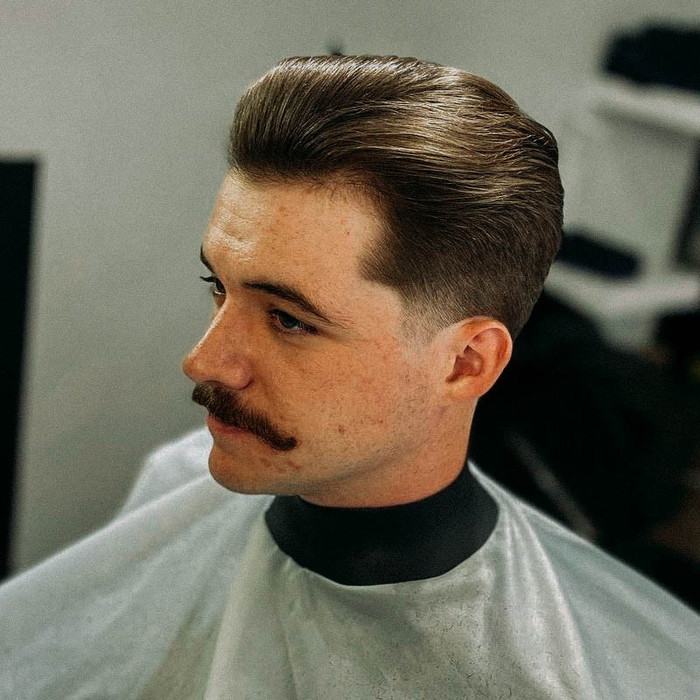 |
Now:
The low taper has a full top, with the hair fading from the ear region to the back.


Styling Tips:
- Use barber shears to trim the ear region and sideburns.
- Apply pomade to give the top a naturally styled look.
- Apply hair oil regularly if your hair is dry and thick.
5. Tapered Neckline

Get this:
You get to rock any style and top it off with a taper cut from the back of your head to the nape of your neck.
In addition, the tapered neckline adds more style to the regular neckline finish.


Styling Tips:
- Choose a hairstyle that blends neatly with the tapered neckline.
- Get a regular neck trim to keep the neckline neat.
- Brush your neckline regularly to keep it tidy.
5 Fade Haircuts
1. Low Fade
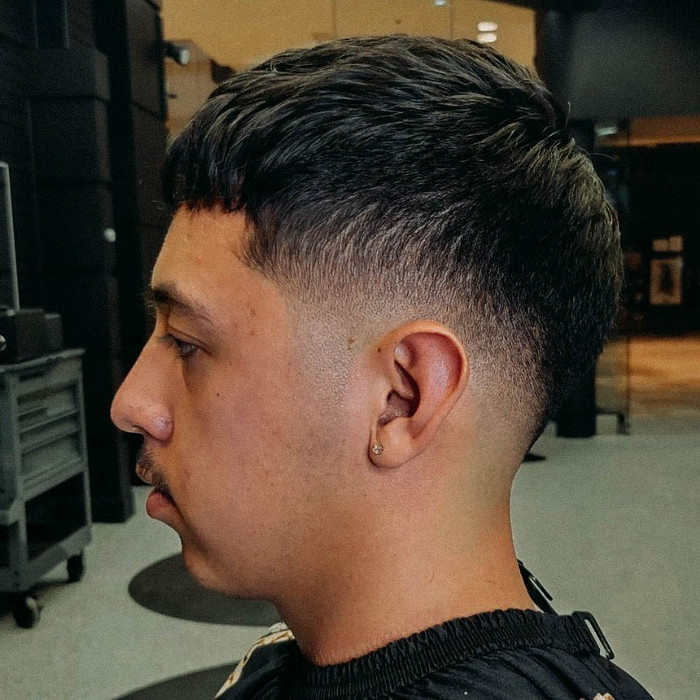
Now:
A low fade starts just above the ear region to the back of the head. Then, the hair length at the center gradually increases and blends to the top.


Styling Tips:
- Use sea salt spray occasionally to improve your hair texture.
- Shampoo your hair weekly to keep it clean.
- Condition and moisturize your hair regularly to keep it healthy.
2. High Fade
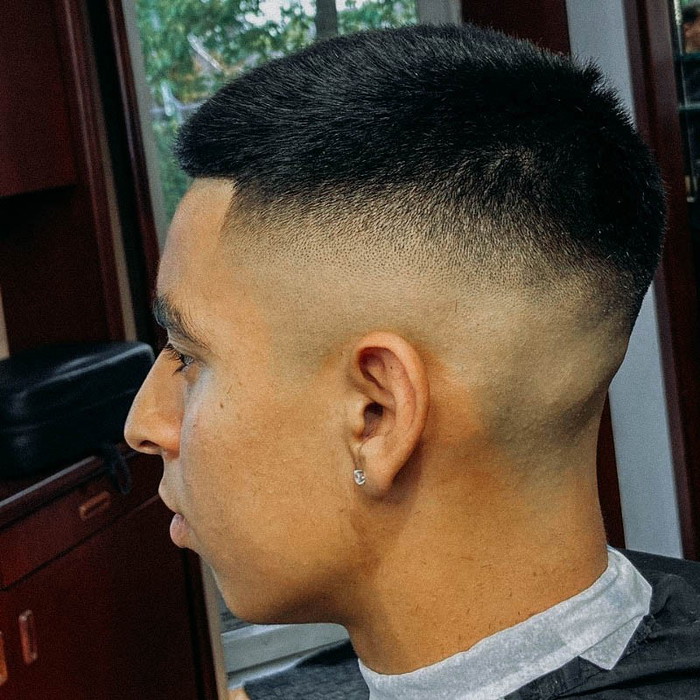
So:
The high fade starts close to the top, tapering off hair from the forehead level to the back while keeping the top full.


Styling Tips:
- Give the top a shine with pomade.
- Apply sunscreen to your scalp regularly.
- Keep the top short and sleek, or comb it upward for a spiked look.
3. Mid Fade
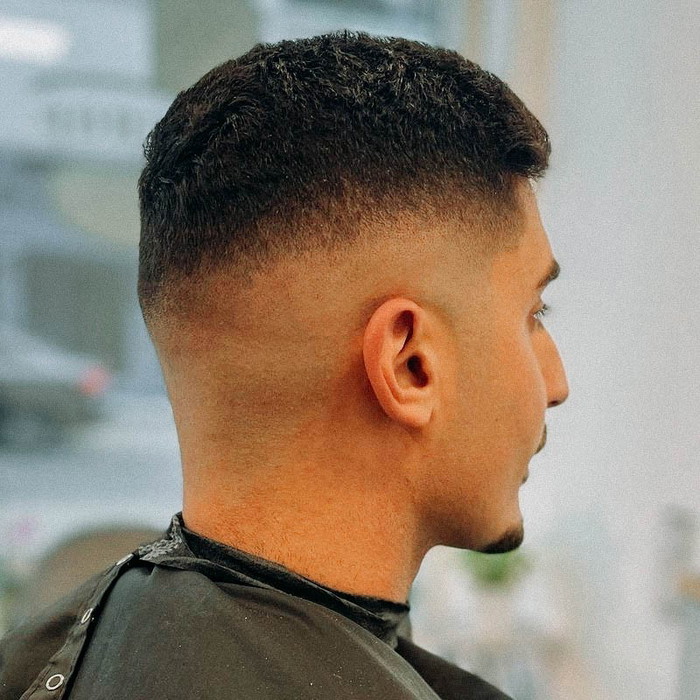 |  |
Listen:
Short for medium fade, this hairstyle fades the hair from the temple region to the sides and keeps the top full. It is the right balance between the high fade and the low fade haircuts.


Styling Tips:
- Apply an alcohol-based hairspray after your haircut to prevent skin irritation.
- Use an unguarded clipper for a clean shave at the sides and the back.
- Trim your hair regularly to keep the fade line defined.
4. Burst Fade

Get this:
The burst fade gives the illusion of hair bursting out from the scalp. It starts with a skin cut about three inches from the ear that blends into full hair at the center.
Here:
The fade follows the ear curve pattern from the front to the back of the head.


Styling Tips:
- Keep your hair slightly damp before styling.
- You can dye the top for a more daring look.
- Keep the top at a length you can maintain easily.
5. Shadow Fade
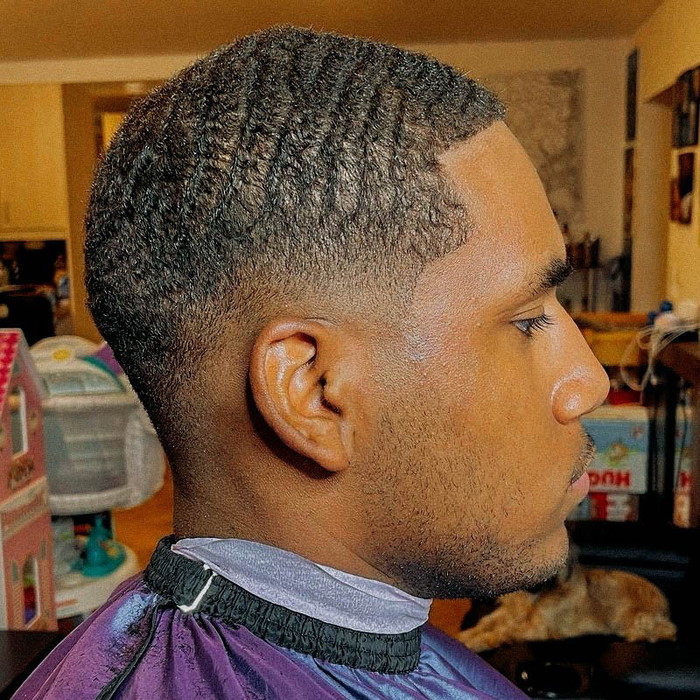
Here’s the thing:
The shadow fade keeps the top full with the back and the sides at minimum length.
Hence:
The hair at the sides is not completely cut off but is barely visible to create a shadow appearance.


Styling Tips:
- Trim the sides regularly to maintain the shadow style.
- Use a fine-toothed comb to keep your hair tidy.
- Pair your hairstyle with a side part to accentuate your look.
Conclusion
As you can see:
- The taper and the fade are classic haircuts with unique styles.
- They are easy to maintain.
- They offer many styling options.
- They suit all face shapes and all hair types.
So:
Now that you know what to look for, it’s easy to change your look!
Finally:
Share your thoughts about these hairstyles with us through your questions and comments in the comment section below!
Frequently Asked Questions
More from Sunny Kambo

How Often Should You Go to the Barber? Expert Advice & Tips

Ever wondered how often you should be visiting the barber? Well, you're not alone. It's a question that's crossed the…

Building Barber Clientele: A Comprehensive Guide for Success

In the challenging world of barbering, it's not just about mastering the latest trends and techniques. The real game…
Often, I get confused about the difference between taper and fade haircut. While they look alike, I knew they're different but couldn't spot exactly before I bumped on this article. Thanks for taking your time to explain the difference between these two haircuts, it sounds very clear.


Comments